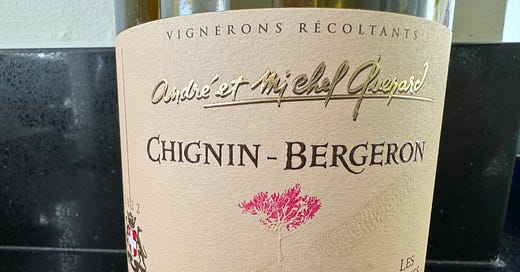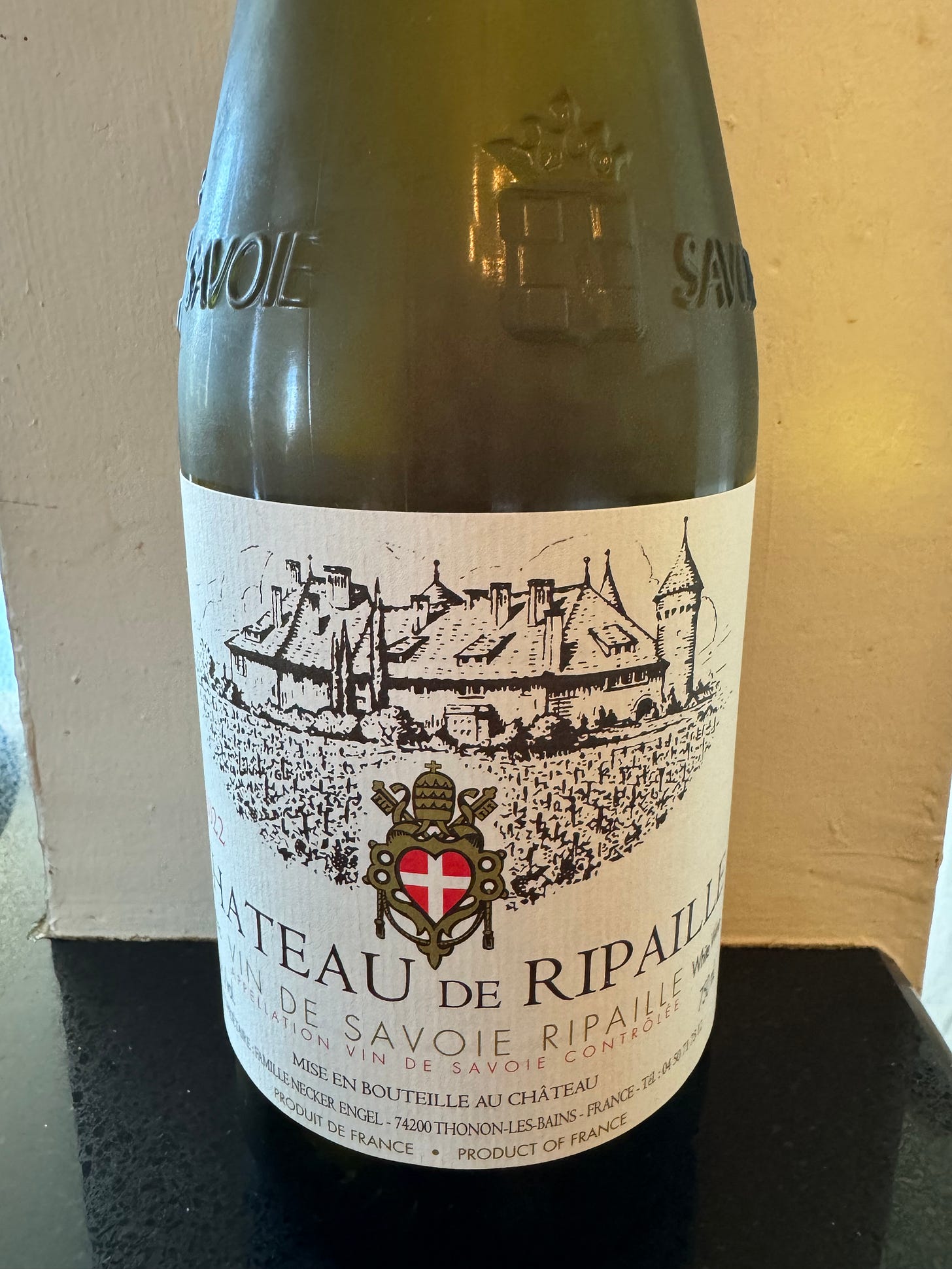At one time, Savoie wines were thought of as après-ski wines for those partaking on the nearby slopes. But increased interest in the region and its local grape types, a new generation of passionate wine producers, and the (so far) beneficial effects of global warming have drawn deserved attention to the wines.
Domaine des ARDOISIÈRES/Maison ARDOISIÈRES
This domaine was founded in the late 1990s, with the first harvest in 2002. The estate is organic and biodynamic, although no certification is shown on the labels.
Wines without asterisk (*) are Domaine des Ardoisières; those with an asterisk are the négociant label Maison des Ardoisières.
2021 vin de France Silice*
This is a négociant wine from Jacquère grapes harvested and vinified by Ardosières. Because of the neutral and low-acid properties of the Jacquère grape, it really needs to be to be drunk at chilled temperature to bring out the qualities, which are tangy yellow fruits in a light body. Drink as young as possible. Agglomerate cork closure. 11% stated alcohol. Lot SIB21. 87/A-
2022 vin des Allobroges Argile
This is an exciting wine with great minerality, nervosity, and tension. It is medium light with stony lemon fruit, noble austerity, and notable length in the mouth. It’s not easy to translate the soil description into English, but the US importer describes them as "schist and ardoise (a type of hard, black schist native to the region), mixed with clay.” 40% Jacquère, 40% Chardonnay, 20% Mondeuse blanche. The closure appears to be agglomerate cork with synthetic disks on both ends. 12.5% stated alcohol. Lot AB22. 91/A+
Domaine FINOT
2021 Coteaux du Grésivaudan Isère Verdesse
Verdesse is a grape that originated in the Isère. It is closely related to Savagnin in the Jura. In France in 1958, there were 19 ha planted in France, but that rapidly declined, and as recently as 2008, that number was still down to 2 ha. With the increased interest in indigenous grapes, the number increased to 10.4 ha by 2018, the latest year for which I can find figures. Verdesse is often used for blending, and indeed this is the only single-varietal version that I have come across. The relation to Savagnin is clear in both the nose and mouth with similar earthy fruit aromas and flavors; it is a relatively full-bodied wine with moderate acidity, and I’d be inclined to drink it young. Certified organic and biodynamic. Cork closure. 13.5% stated alcohol. 90/A
André et Michel QUÉNARD
This Quénard (there are many in Savoie) follows organic practices, although certification is lacking.
2021 (Savoie) Chignin Les Roches de la Savoyarde
This wine is from Jacquère grapes that are 30 to 60 years-old. The wine is light, mineral, energetic, and nervy with light minerality. Very good acidity that drives the ripe fruit. Nomacorc closure. 11% stated alcohol. 89/A
2022 (Savoie) Chignin Les Roches de la Savoyarde
Even from good producers, I find wine from the Jacquère grape difficult to master, but this producer does it on a regular basis. Good acidity, minerality, and energy here. Not for people looking for a fruit bomb. 11.5% stated alcohol. Nomacorc closure. 11.5% stated alcohol. 89/A
2021 (Savoie) Chignin vieilles vignes
Another wine from Jacquère, there’s good depth, concentration, and energy here, along with some white fruit expression. Nomacorc closure. 11% stated alcohol. 90/A
2020 (Savoie) Chignin-Bergeron Les Terrasses
This wine is from the grape known locally as Bergeron and in the Rhône Valley as Roussanne. The wine is enjoyable for its light expression of apricot fruit in a medium-weight body. 13.5% stated alcohol. 87(+)/B
2022 (Savoie) Chignin-Bergeron Les Roches Blanches
Here is a clearly superior expression of Bergeron compared to the wine above. It is medium-light with white flowers in the nose and mouth and rainwater crystallinity. It is still fairly closed and should show better with more time in bottle. Cork closure. 13% stated alcohol. 13.5% stated alcohol. 91/A
Jean-François QUÉNARD
2020 Chignin Vers les Alpes
From the Jacquère grape, which so often yields wines without character, this wine is medium-bodied with a lime minerality, and enough acidity to provide bite and life. Drink over the next few years as an apertif or with fish, white meats, cheese, charcuterie, etc. Nomacorc closure. 11.5% stated alcohol. 89/A
Château de RIPAILLE/Famille NECKER ENGEL
2022 Savoie Ripaille
This wine is from Chasselas, grown on property bordering Lake Geneva. The 2022 gives a light, crisp wine with minerality and subtle earthy aromas and flavors of almond, lime, and quinine. It is good for sipping on its own and for salads with the likes of chicken or shrimp, poultry, white fish, and cheese. Cork closure. 12% stated alcohol. 88/A-




